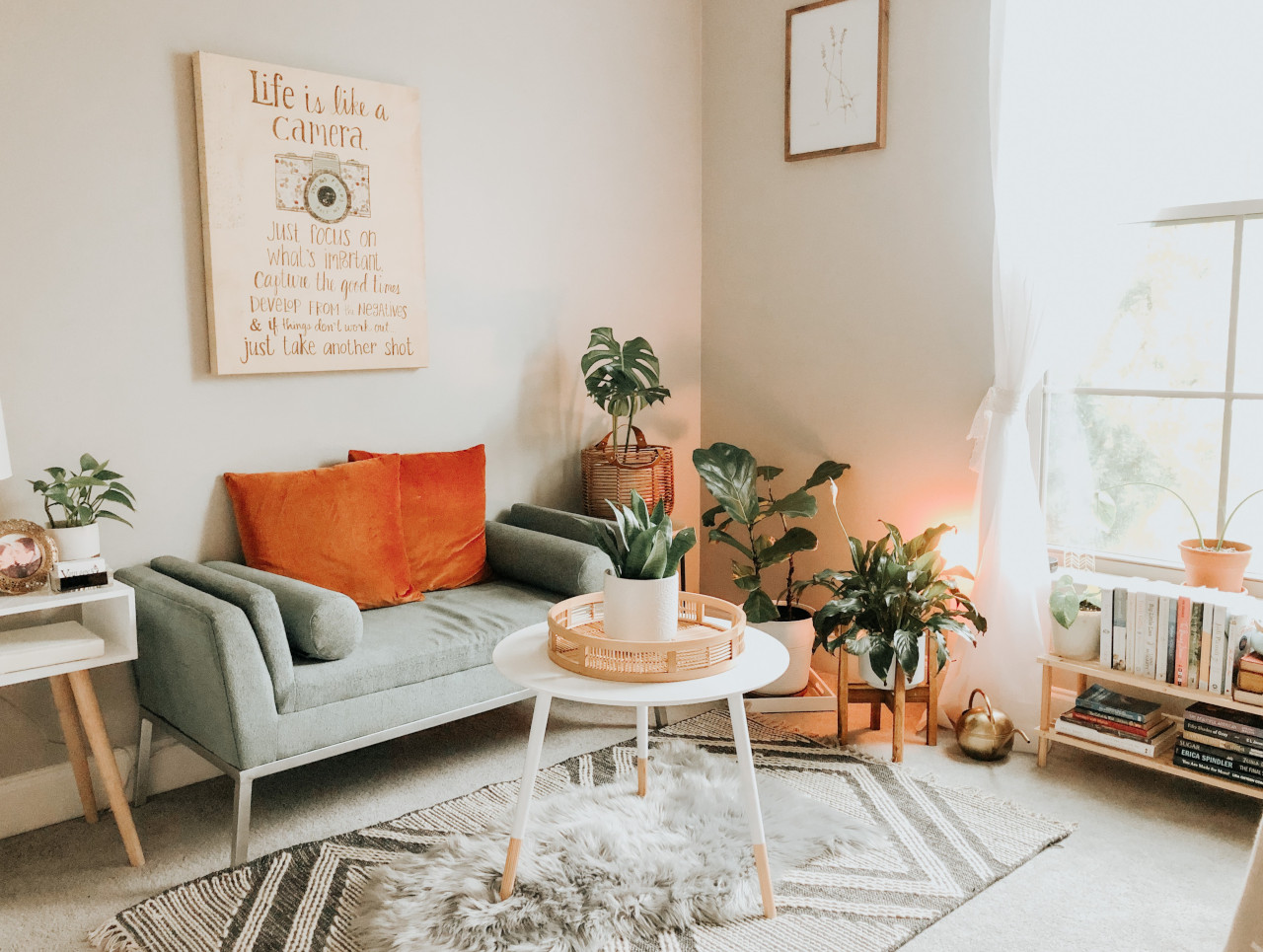Feng Shui
Feng Shui, an ancestral Chinese practice, is one of the teachings sought after by Westerners in search of Zen living. Asian countries do indeed exert a certain fascination on Westerners who would like to discover its secrets. Despite great cultural differences, they often draw their inspiration from Chinese practices and customs, especially when it comes to well-being and serenity. Feng Shui mixes beliefs, tradition, common sense and divination. It considers that a fluid circulation of energy in the universe allows us to live in harmony with the earthly environment. The practice of Feng Shui increases our chances of success and balance in many areas of our lives.
A good Feng Shui respects certain rules for the layout of the rooms of the house and makes it possible to establish harmonious relations, to maintain a good health, to attract prosperity in the home. A bad Feng Shui will attract misfortune and can have sometimes tragic consequences on the inhabitants of the house.
A good Feng Shui positioning in the house takes into account the 5 elements: Wood, Fire, Earth, Metal and Water and respects a balance between the Yin and Yang forces. Each room has its own symbolism and will have to respect a particular organization because a good orientation of the furniture which composes it, the presence or absence of certain objects, green plants, the choice of a color are as many elements which take part in the good circulation of energies.
A LITTLE HISTORY ABOUT FENG SHUI
The origins of Feng Shui are not well known but a legend would explain that around 4000 BC a man named Fu Hsi settled on the banks of the Lo River. Until then, floods regularly destroyed crops and houses there. But as soon as Fu Hsi arrived, the floods mysteriously stopped. One day, while meditating on the bank, he observed a tortoise, symbol of happiness in some Asian countries, whose shell was decorated with black and white dots. The arrangement of the dots was such that when the dots on the diagonals, columns or rows were added together, their sum was always equal to 15 and composed a magic square. Many schools of Feng Shui rely on the magic square to teach in many different ways. In Feng Shui in particular, the third order square called Lo Shu (the book of the river) is used as a rule of calculation to determine the energy pattern of a house and the circulation of the influxes. We can use it to organize and balance in an optimal way the different areas of a house that correspond to the different areas of our lives: professional life, creativity, prosperity, relationships with others, family, health and well-being, wisdom and knowledge, vitality, self-esteem...
The ideology of Feng Shui revolves around Chi, the balance between Yin and Yang and the theory of 5 elements. The concept of "Chi" (named "Ki" in Japan and "Prana" in India) was born in China thousands of years ago. Chi is the circulation of vital energy.
Feng Shui is translated by the wind and water, elements which for the Chinese materialize the energy of the sky and the earth and the perpetual circulation of energies. Feng Shui is based on the idea that it is necessary to balance and harmonize the natural flow of energy around us and especially in our homes in order to preserve and improve the health, prosperity and well-being of the inhabitants.
It is the simplest school of Feng Shui to understand and adapt for westerners and the one that bases its calculations on the 9 Ki of Chinese astrology. This divinatory art uses trigrams (represented by 3 lines and in correspondence with the 5 elements and specific characteristics). For those in search of spiritual and physical well-being and balance of life, Feng Shui is a way of thinking inspired by the ancestral methods of Chinese thought such as the circulation of Chi, Yin and Yang, the theory of the 5 elements.
For the Chinese, Feng Shui is a philosophy of life allowing to live in harmony with nature. In the western world, Feng Shui is rather considered as a method of planning our environment to help us achieve harmony.
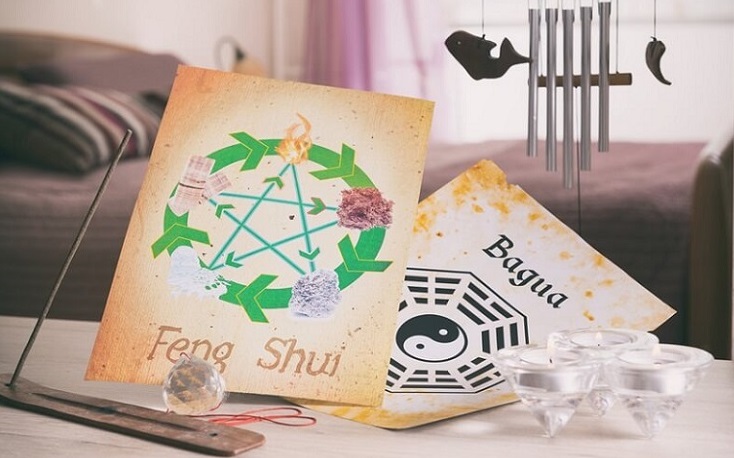
THE MAIN PRINCIPLES OF FENG SHUI
The essential principles with which we must familiarize ourselves to understand Feng Shui are Chi, Yin and Yang, the 5 elements and the 9 Ki.
Chi
Chi is difficult to define with exactitude, it could correspond, even if it is a little reductive, to what we call energy or influx in our western world. It is the energy that circulates in the universe, the earth, our body and mind and in animals. Many applications including reiki, shiatsu, Qi gong, Tai chi, acupuncture and Feng shui are derived from "Chi". When energy flows flow harmoniously around us it can only have a positive effect on our body, thoughts, emotions and life in general. Some Chinese therapeutic disciplines, such as shiatsu or acupuncture, are based on this free flow of energy to release negative energies that cause diseases or blockages...
The 5 elements
The principle of the Five Elements is a Taoist theory based on the observation of nature, its continuous evolution and the movements of the rhythm of life. Each element has a correspondence with a season, a cardinal point, a color...
These elements are interdependent and need each other to exist or destroy each other. Each element nourishes the next and the fact that it exists is the cycle of creation :
• The natural combustible wood allows the production of Fire. The energy of the wood is turned towards the outside and the others.
• It is the symbol of growth and spring. It is associated with the East and the color green.
• Fire burns what is in its path, it becomes ashes and then turns into earth. The energy of Fire pushes to action.
• Fire is the symbol of Yang and summer. It is associated with the South and red.
• Earth is the origin of metal (since it is found in its entrails). The energy of the Earth brings together.
• The Earth is in the center and its associated color is yellow.
• The metal nourishes the water (it brings minerals, trace elements...). The energy of the metal is turned inward.
• Metal is the symbol of work and autumn. It is associated with the west and white.
• Water gives birth to wood (wood needs water to develop). Water's energy is peaceful and fluid.
• Water is the symbol of Yin and winter. It is associated with north and black
The five elements tell us how the energy that surrounds us circulates. This allows us, depending on the case, to restore the harmony of the energies or to promote a good circulation of the Chi. The 5 elements must be present together. They must be distributed harmoniously and in a balanced way according to the atmosphere that one wishes to give to a room, or according to the temperament, the personality of a person or an environment.
For example, for a sad and not very expansive person who lacks Fire, we will try to fill this lack by placing red objects in his interior decoration, we will add warm lighting and we will limit the presence of Water element because Water extinguishes Fire...
The concept of Yin and Yang
Yin and Yang are two parts of a whole. In Chinese beliefs, they represent two opposing forces in continuous movement that interact and complement each other and are at the origin of everything that happens in the universe. These forces are quite distinct but are inseparable. The balance between Yin and Yang, the Tao, symbolizes the harmony of the universe.
Yin (shadow) represents kindness, femininity, night, moon, interiority, ... while Yang (light) represents firmness, masculinity, day, sun, exteriority ... To live serenely, it is important to establish an energy balance whether it is in our environment, inside our house or in our inner life. A good Feng Shui exists only if there is harmony between Yin and Yang.
The 9 Ki
It is a divinatory art intended to find how to live in harmony in space and time and thus be able to approach the situations and events of our life in the best possible conditions. 9 Ki astrology is often used in Feng Shui because they are both based on the same fundamental principles and are complementary. The 9 Ki astrology allows us to establish the basic emotional and energetic personalities of a person, the periods which are favorable or unfavorable, his compatibility in space, in his movements when Feng Shui allows to create a harmonious energetic environment...
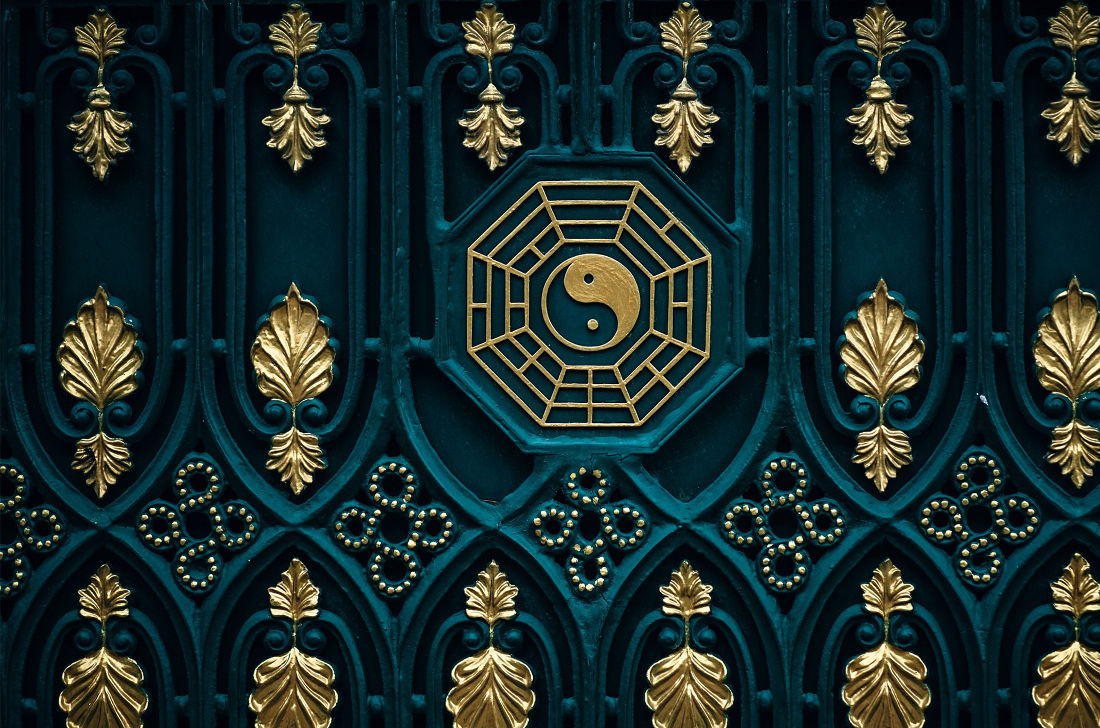
FENG SHUI TECHNIQUES AND ACCESSORIES
The importance of balance which allows the free flow of energy is no longer to be demonstrated for a good practice of Feng Shui. In order to create the right conditions, it is advisable to check the harmony of our home and to surround ourselves with accessories that bring protection, well-being and vitality... There are techniques such as Pa Kua that allow us to distinguish a good Feng Shui from a bad one and we will use Feng Shui elements and objects to correct, re-establish and improve the Chi.
Pa Kua and Lo Shu square
One of the techniques of Feng Shui, Pa Kua, which can be presented in an octagonal form or in the form of the Lo Shu square, is the simplest to use to determine the most appropriate layout of a room or a house, according to the areas one wishes to favour. The upper part of the square represents the earth, the middle lines represent man, and the lower ones evoke the sky. There are 9 squares in this square and each of them represents an area of our life.
Take a sheet of paper on which you will have drawn the plan of your house or the room you wish to analyze or arrange. Place a layer adjusted to your plan on which you will have previously positioned the 9 areas as shown in the table above. The Pa Kua should be positioned so that the entrance door is in the wisdom, career or help boxes.
You will then be able to analyze your interior, check the balance of the elements, modify the layout if necessary and make your interior a harmonious and comforting place. Depending on the area you want to focus on in your interior and the atmosphere you want to create, you can have the elements at your disposal that positively influence your emotions and ensure a good flow of energy.
Feng Shui animals
Feng Shui masters in ancient China took the environment into consideration when choosing the best place to build a house. In this environment lived 5 mythical animals considered as protectors: the tiger, the phoenix, the turtle, the dragon and the snake. Although they are positioned outside, their protection is exerted on the inside of the dwelling.
• The Black Turtle symbolizes stability, in winter it is associated with the mountains, it is placed at the back of the house and protects us from bad outside vibrations.
• The Red Phoenix, symbol of summer, projects and the future, it is placed in front of the house to act as a good luck charm.
• The Green Dragon, symbol of health, work, prosperity and spring, is positioned to the left of the house and ensures the harmony of the house and its inhabitants.
• The White Tiger, symbol of strength, energy, communication, relationships with others and autumn, is on the right side of the house and protects especially the woman and children of the house.
• The Yellow Serpent, symbol of perseverance and perfect balance, is located in the center of the house and is the link between all the other Feng Shui animals.
Water
Shui is water. Without being indispensable, the presence of water in the Feng Shui universe has its importance. It brings calm and appeasement but being a powerful element, it will be necessary to handle its use with prudence. and to take care that the water is always clean.because stagnant or dirty water only attracts bad energies and alters the quality of the Chi. One will find its energy in the aquariums provided that they are open on the top, fountains of interior .
Plants and flowers
Flowers and plants have their own properties, some may be beneficial and others toxic. To choose the right plants and take advantage of their virtues, we will inquire about their powers to make the right choice according to the desired effect, some plants are cleansing, depolluting, revitalizing, relaxing ...
Fresh flowers, a symbol of the generosity of nature, have a positive influence on the well-being of the inhabitants and their environment. Therefore, we will not deprive ourselves of the presence of orchids, bamboos or other plants in our interiors but we will avoid dried flowers, thorn flowers or cacti.
The lighting, the lights
Whatever the room in your home, you will prefer several soft lighting sources spread throughout the space rather than just one. In this way the room can be perfectly lit, without any shadows, and different atmospheres can be created by playing with the lighting. In a room with dark furniture, for example, the lighting will be brighter than in a room with light furniture.
The mirrors
Mirrors can stop harmful energies but they are also useful to enlarge rooms and capture the good energies like a nice outdoor landscape or light.
The images
Images that we like, that have a happy meaning or that evoke beautiful memories or good times in our eyes are welcome in a Feng Shui house. As long as they are charged with positive energy, they can enter our house in the form of photos, paintings, drawings...
Chimes and mobiles
Pure and harmonious sounds and movements of the mobiles have a balancing and soothing power on the inhabitants of a house. They chase away bad vibrations and contribute to a good circulation of energies .
In Feng Shui, the chime is hung in a place where the air circulates so that it can be heard to tinkle, at the entrance of the house or in the rooms of a house.
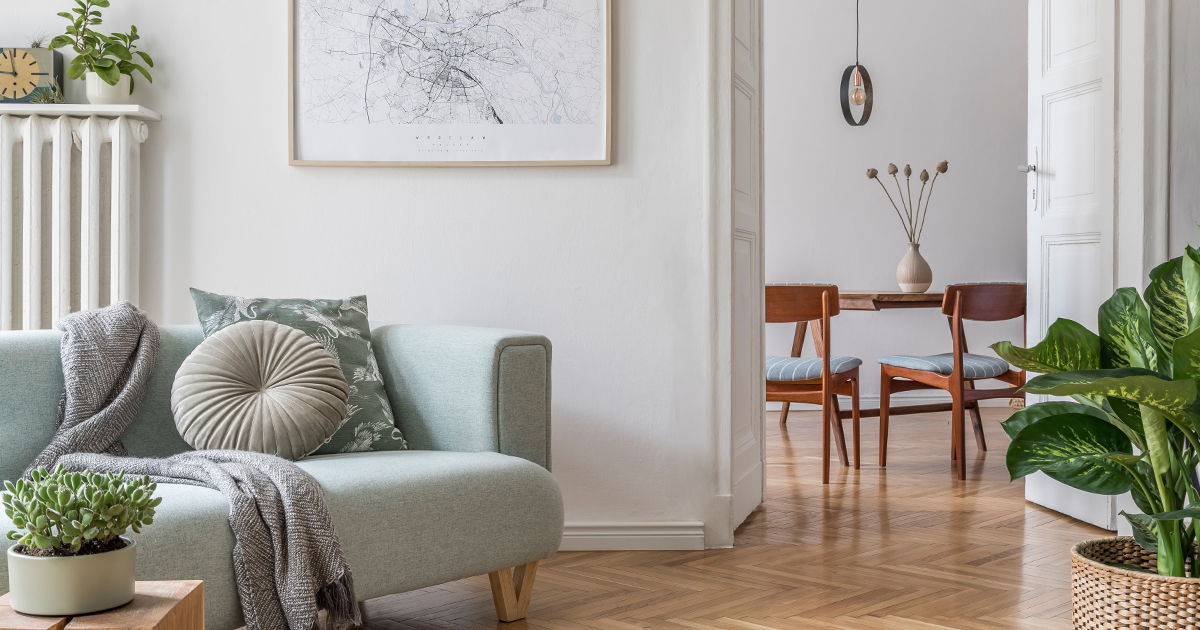
ARRANGE ITS INTERIOR IN A FENG SHUI WAY
Harmony must reign in the Feng Shui house. Everything is designed to stimulate, or soothe, to create a warm and friendly atmosphere, or conducive to reflection, as needed... And to achieve this, every detail counts, from the color that influences our morale, to the lighting or the placement of furniture in a room.
Feng Shui colors
The colors of our clothes as well as those present in our environment have an impact on our moods and on the atmosphere that surrounds us. In Feng Shui the colors are divided into Yin colors and Yang colors. They are opposite and complementary and a balance must be found so that they bring well-being and serenity.
The bright colors correspond to the Yang colors and are energizing. They should be reserved for the rooms of the house where one is active and where one receives, such as the kitchen or the office.
The soft, pastel colors correspond to the Yin colors and are soothing. They will therefore be mainly used in rooms of rest and calm, such as the bedroom, the library... In fact, the most important thing is to choose the colors according to the ambiance you wish to install in each room of your home.
The colors in Feng Shui, you will have understood it, have a symbolic meaning. They are in correspondence with your emotions, your moods, the elements :
• Red is associated with the element Fire and symbolizes dynamism, prosperity, love. This color presented in an excessive way can cause excitement and nervousness. It will be used in the office or living room but should be avoided in bedrooms.
• Orange is the color of change, friendship, creativity. It has a stimulating, energizing and antidepressant effect. It is therefore suitable for children's rooms, the entrance, the living room and the kitchen.
• Yellow is a solar color which favors exchanges, communication. It brings joy, calm and promotes inspiration and spirituality. Yellow will find its place in a child's room, a living room, a meeting room.
• Green, associated with the element wood, is the symbol of youth, growth, health and harmony. It is a soothing color that promotes concentration and creativity and is very suitable for a kitchen or office.
• Blue is associated with the element Water. It is the color of the soul, of wisdom and serenity and promotes reflection and meditation. It will be used in an office or a bathroom.
• Purple represents the perfect balance between the color Yang (red) and Yin (blue), and symbolizes spirituality, intuition. It stimulates the intellect, which is why it finds its place in an office.
• Pink soothes and alleviates the bad mood. It is suitable for the bedroom and the bathroom.
• Grey is associated with the Metal element. It symbolizes concentration and is used for the office.
Certain colors are to be avoided in Feng Shui or to be used with moderation:
• White symbolizes purity and innocence. One uses rather off-white because one avoids using this pure color which would be likely to create a feeling of emptiness and uneasiness.
• Black symbolizes mystery and magic. This color incites pessimism, which is why we use it in small touches in our environment. Brown is the color of stagnation and incites nostalgia, so we should avoid using this color.
It will be necessary to find a balance between Yin and Yang colors. Too many Yin colors in an interior promote weariness, languor while an excess of Yang colors can cause aggressiveness and tension.
A Feng Sui entry
The entrance is the first impression a visitor will have when entering your home and it will also be the last when leaving. The entrance is also a place for the passage of energies. That is why it is important to tidy up this room and make it welcoming. A mirror that doesn't face the door which would send energy outside, a green plant, an image of space or a Zen landscape will be welcome in the entrance as long as they are not too cumbersome.
A Feng Shui bedroom
It is in our bedroom that we recharge night after night. To allow the energies to circulate well in a Feng Shui room and to create the best conditions of well-being, we will take care to respect certain Feng Shui rules. We will install few pieces of furniture. We will determine the location of the bed so that it is as far as possible from the window and the door and that the head is positioned against one of the walls. We will avoid clutter that is incompatible with a Feng Shui room and we will choose dimmable lighting if possible to adjust the intensity of light and create a soft atmosphere that contributes to calm and rest.
We will privilege the presence of Yin elements, soft, comfortable to create a soothing atmosphere and conducive to restful sleep (materials, shapes, colors) and we will remove all elements that could disturb our sleep: mirrors should not be placed in front of the bed, aquariums, electro-magnetic equipment should be banished from the room.
A Feng Shui salon
The living room is the place where one receives one's relations, friends, family and should be a welcoming room, pleasant to live in, a comfortable place, conducive to exchanges, confidences and communication in general. One will choose furniture of rounded forms, a lighting which can be modulated according to the nature of the exchanges, warm colors The sofas and armchairs will be placed so as not to turn the back to the door and around a coffee table or a chimney. One will avoid overloading the living room and to arrange prickly plants there especially near the seats and sofas for a fluid circulation of energies.
A Feng Shui kitchen
The kitchen must be convivial because it is an important room in the house where we meet to prepare food, discuss and share moments together. It is a place where you can move around easily and it must be functional. Storage space should be provided so that it drags as little as possible. The worktop should be placed so that the person cooking can see the entire room at a glance and not have his back to the door. We will choose colors that bring warmth.
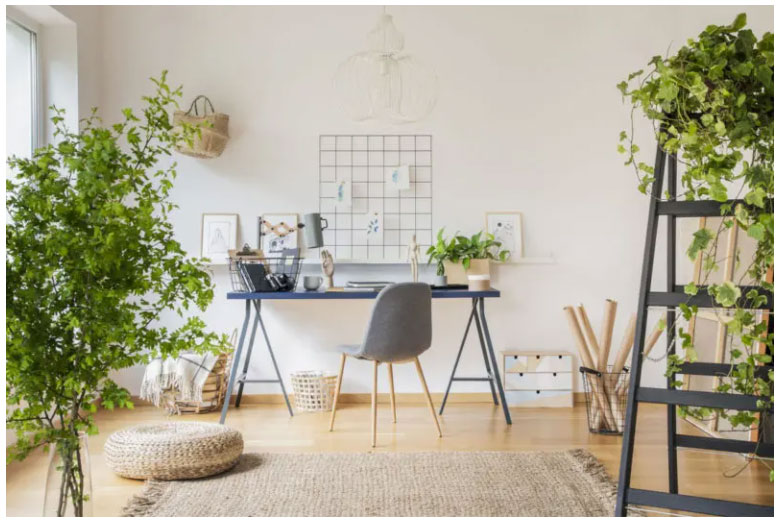
THE 10 MISTAKES TO AVOID IN ORDER TO LIVE ZEN ACCORDING TO FENG SHUI
One of the first rules to live Zen according to the rules of Feng Shui is to avoid being invaded by useless or hostile objects, aggressive colors, negative energies. To get rid of bad influxes, a purification and cleaning of our space may be necessary.
Avoid the disorder and its misdeeds
The practice of Feng Shui is incompatible with disorder. Clearing space is one of the elements that allows regeneration, the disorder being blocked energy.
In Feng Shui, we consider that the disorder makes the Chi stagnate, affects us and has negative effects. It generates fatigue and constitutes negative and inert energy. By tidying up, this bad energy is released and room is left for new energy and vitality.
When disorder invades our space, it holds back the past that occupies the space and prevents novelty and action. By cluttering up much of our space, disorder makes things and thoughts more confusing.
Disorder leads to procrastination: the more it accumulates, the more energy stagnates and the extent of the work of tidying up seems insurmountable and exhausts in advance. Lack of order creates tension and can lead to arguments within the family. It is also a hindrance to our projects, it isolates us because the house is badly tidied up and we may hesitate to invite family or friends.
Instead of raising our energy, disorder drags it down, it generates depression and sometimes even health problems because it attracts and retains dust, mold, pests...
It is a source of boredom preventing inspiration and vitality from entering the house. With clutter our energy becomes attached to too many insignificant objects and we lose sight of what really matters.
Avoid keeping unnecessary things
We accumulate over the years many magazines, objects, furniture, clothes or other, ... that clutter up our space but are no longer of any use to us and make a mess. It is necessary to learn how to get rid of what does not serve us any more, of these objects which are dust nests and which make the bad energies stagnate. On the other hand, we must get into the habit of classifying and tidying up what belongs to us and is useful to us.
Don't let bad energies take hold: clean and purify
In order not to let bad energies get in the way of our well-being and make our home a haven of peace, the first step is to make a clean place: clean, tidy and purify. Feng Shui advocates light, cleanliness, balance, harmony and repels what is dark, dirt, disorder.
When one moves into a new home or when a heavy atmosphere has been stored in an interior, Feng Shui recommends to proceed to an energetic cleaning of the place by following precise rituals of purification. Many descriptions of rituals are found in the Book of Rituals, Li Ki. One can for example purify a place by Fire by using incense that will be burned in the various rooms of the house.
A good Feng Shui practice begins with a thorough cleaning of the house to renew its energy field: we will clean the house thoroughly, meticulously dusting the windows, vacuuming and washing the floors. We will bring new energy and clean the air in the house by opening a door and a window to allow air to circulate freely.
Purification rituals allow you to connect to your home, disperse bad energies and make room for positive energies.
Magnetic radiation
Avoid the presence of one's cell phone, a cubicle or computer in the bedroom to avoid prolonged exposure during the night to these electro-magnetic fields.
Avoid sharp corners of a piece of furniture or an object
To improve the circulation of Chi, the sharp, protruding angles that block energy will be softened, by the presence of a green plant for example.
The absence of mirror
The absence of mirror is to be avoided because the mirror contributes to the good circulation of energies in Feng Shui. But pay attention to its location, because for example placed in front of a window or a door, it drives out the energies.
The absence of plants
The presence of plants is beneficial in the Feng Shui house, they keep away bad influxes, but it will also be necessary to take care not to keep faded flowers which are a source of indoor pollution.
Don't limit yourself to just one light
Plan several lights to be distributed in different areas of a room. The light will be softer and will limit the shadowy areas.
Do not neglect your entry
The entrance is the first room in your home that visitors will discover. It is from this room that the first feeling will emerge. For good waves to be released, it is important in Feng Shui to make this room welcoming and pleasant.
Do not have a bathroom without a door
The bathroom is the place where you clean yourself and get rid of impurities and bad energy. This is why it must be partitioned. On the other hand, this room should be ventilated to prevent the Chi from stagnating.

